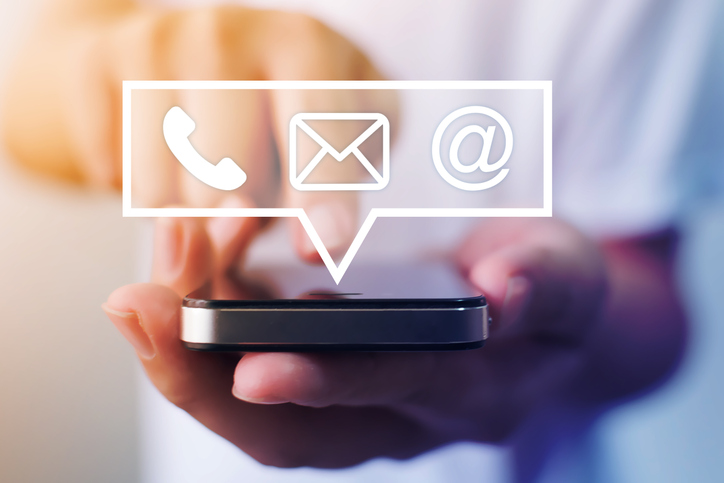In a way, people want their experience in dealing with customer service issues to feel a lot like what happens on social media.
When you share an update on platforms like Facebook or Twitter, it feels good when your friends and followers give it a “like” or share it with their network.
When you post a question or ask your network for advice, it feels great when everyone replies with thoughtful or helpful comments.
Great customer service operates with a similar sense of responsiveness and empathy.
The best agents will move quickly to let customers know they’ve heard a question or complaint.
If it's a troubleshooting issue where they have to walk the customer through fixing a product, they remain encouraging and supportive.
This is worth keeping in mind as more organizations recognize the way social media is becoming a critical customer service channel and begin to adapt accordingly.
Customers often turn to social media because of its immediacy. Instead of dialling into a call centre and being kept on hold, it’s relatively quick and easy to post a question or complaint and tag a company’s account with the “@“ symbol.
Many companies also use social media heavily as part of their marketing strategy, so customers begin to think of those platforms as a natural place to ask for help when something with their purchases goes awry.
Then there’s the fact that people are spending a lot of time on social media in general. Rather than interrupt the fun they’re having to tackle customer service problems, they can multitask by reaching out to a brand while also continuing to browse their feeds and engage with their network.
Your company probably already knows the basics of using social media for customer service, like having a complete profile and a photo for your brand. These are some of the other things to check off your to-do list to make the most of the channel’s potential:
1. Expand your social presence with service-oriented accounts
You don’t always need to set up a dedicated social channel for service issues if you’re a small business.
Depending on the volume of inquiries or complaints you receive, though, it can be a way to make the process streamlined.
Even if you set up a dedicated account, be prepared for some customers to start interactions using the one that’s intended for marketing purposes, because they don’t always know if you have more than one.
2. Monitor for service issues that might not be brought forward
Ideally, customers will come to you first if they’re upset, instead of bad-mouthing your company to all their friends and followers on social media.
If not, there are opportunities to turn a relationship around by simply paying attention.
Social listening tools can keep you apprised of when your brand gets mentioned on Facebook, Instagram and the like.
When the mention involves something negative, train agents to be proactive in offering to make things better.
3. Make enough space to offer the best service
Customers may reach out using a short-form service like Twitter because it’s fast and easy, but the help you need to provide might require something more in-depth.
Be ready with alternatives mechanisms to give them comprehensive answers or assistance.
This could include a chatbot, an email address or a phone number.
4. Show you’re an employee, not a corporate entity
Customers can get angry or upset with companies, but they respond better when they feel they’re being heard by real people.
Train agents to introduce themselves on social media on the first response, even if it’s only their initiatives.
Use the “I” personal pronoun whenever possible to create a sense of intimacy and empathy rather than the “royal we,” unless you’re talking about the company’s policies or principles.
Sign company posts or messages with the agent’s name or initials, even when things are wrapped up.
5. Take it private when appropriate
Customers may call out your brand on social media in a very public, visible way. You should start by responding just as publicly, whether that’s an apology or just an acknowledgment that you’ve heard and them and are ready to help.
That said, you may need to deal with account details that shouldn’t be broadcast openly, so suggest moving the conversation to their direct messages (DMs) or some other offline channel if necessary.
You can switch the conversation back to “public mode” if they post a thank you message on their feed later.
6. Make the most of the medium you’re in
Think about how people tend to use social media. It’s not all just text.
They often post images and share a lot of video content in order to make a point. Your company can do the same as it helps them solve a problem.
You may already have tutorial clips or infographics with troubleshooting tips on hand. Make them part of what you offer as part of the conversation you’re having.
Also, consider creating a library of these assets that can be permanently found on your social channels.
7. Prove you know them almost as well as the rest of their network
When people share something on social with family and friends, there’s a built-in trust because of the relationships they have with them offline. Brands can do something similar if they make good use of the customer data at their disposal.
Even if someone is reaching out on Instagram or Twitter, agents armed with the right tools can demonstrate they’re familiar with the customers account history and purchases, rather than making them go through all the backstory when they initially respond.
When you get good at offering service through social media, customers might give your account some “likes” or positive comments.
When you become great at it, they give you something even better — ongoing loyalty and even more of their business.


